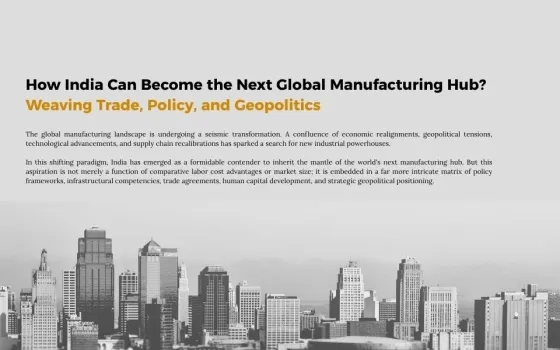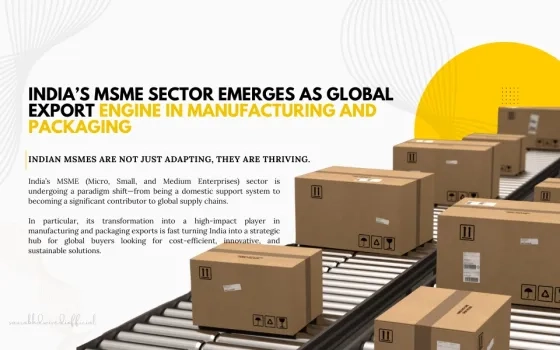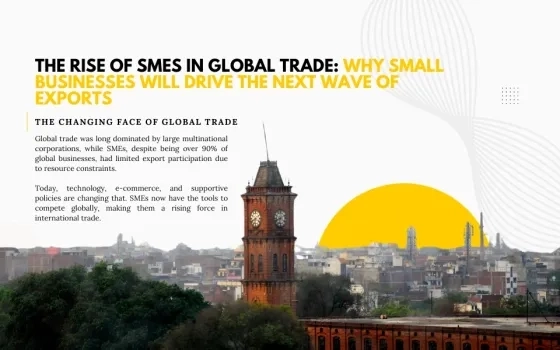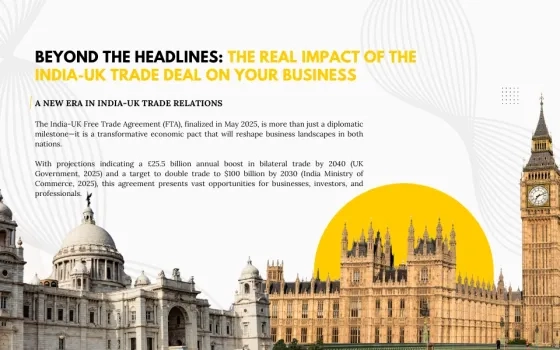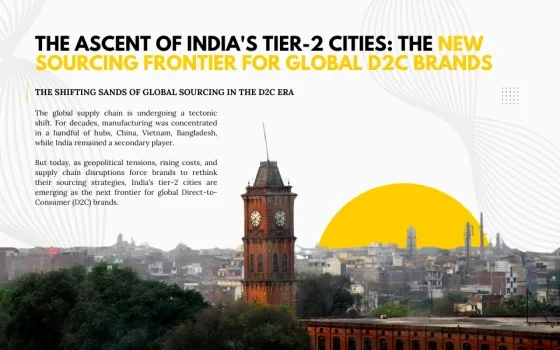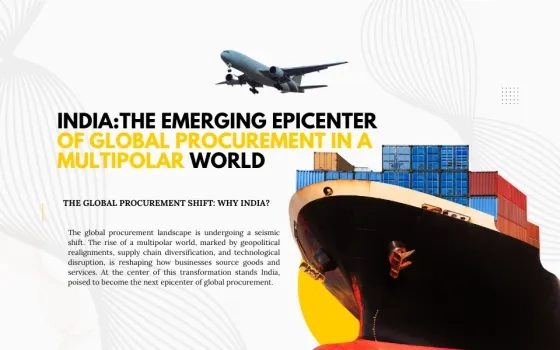Introduction
The global manufacturing landscape is undergoing a seismic transformation. A confluence of economic realignments, geopolitical tensions, technological advancements, and supply chain recalibrations has sparked a search for new industrial powerhouses. In this shifting paradigm, India has emerged as a formidable contender to inherit the mantle of the world's next manufacturing hub. But this aspiration is not merely a function of comparative labor cost advantages or market size; it is embedded in a far more intricate matrix of policy frameworks, infrastructural competencies, trade agreements, human capital development, and strategic geopolitical positioning.
Policy Reforms
India has made concerted efforts to enhance its manufacturing competitiveness through a series of policy interventions. The "Make in India" initiative launched in 2014 aimed to position India as a global manufacturing hub by improving the ease of doing business, attracting foreign direct investment (FDI), and developing industrial corridors. Complementary schemes such as the Production-Linked Incentive (PLI) programs have targeted sectors ranging from electronics to pharmaceuticals, offering financial incentives tied to output.
However, the efficacy of these policies is nuanced. While PLI schemes have attracted marquee investors in mobile phone manufacturing and solar components, their long-term sustainability depends on execution fidelity and global competitiveness. Moreover, India continues to wrestle with legacy issues: land acquisition bottlenecks, high logistics costs, bureaucratic red tape, and an overburdened judicial system.
Trade Dynamics and Global Integration
Trade policy is a double-edged sword in India’s manufacturing journey. On the one hand, India has taken cautious steps towards strategic protectionism, withdrawing from the Regional Comprehensive Economic Partnership (RCEP) in 2019 due to concerns over Chinese imports. On the other hand, it has actively pursued bilateral trade deals with countries like Australia and the UAE, and negotiations are ongoing with the EU and the UK.
This selective engagement reflects a calibrated approach to trade liberalization, but it also creates an uneven playing field. India must strike a balance between nurturing domestic industries and integrating into global value chains. A comprehensive export strategy that aligns with domestic industrial policy will be critical. Otherwise, India risks falling into the trap of import substitution without scale or efficiency.
Infrastructure and Logistics:
Manufacturing competitiveness is fundamentally linked to the quality of infrastructure. Despite improvements in roadways, dedicated freight corridors, and port modernization, India still lags behind global peers in logistics efficiency. The average turnaround time at Indian ports is significantly higher than in East Asian economies, and inland connectivity remains inconsistent.
The National Logistics Policy (NLP) and the PM Gati Shakti plan aim to address these bottlenecks through multi-modal infrastructure planning and digitization. However, the effectiveness of these frameworks hinges on coordinated execution across central and state governments. Without that, logistical inefficiencies will continue to erode the cost advantages India seeks to offer.
Labor Market and Skill Development
India's labor cost advantage is often touted as a competitive differentiator, but the real issue lies in labor productivity and skill depth. The formal manufacturing sector remains a small slice of the labor market, while informal employment continues to dominate. Labor law reforms introduced in recent years, including the codification of labor laws into four labor codes, aim to increase flexibility and reduce compliance burden.
Yet, implementation remains patchy, and there is persistent friction between labor flexibility and worker protections. Moreover, India's vocational education and skill development ecosystem still struggles to match industry requirements. Programs like Skill India are a step in the right direction, but much more is needed in terms of curriculum alignment, industry partnerships, and outcome-based training.
The China+1 Strategy
One of the key catalysts propelling India's manufacturing ambitions is the global recalibration of supply chains, most notably the "China+1" strategy adopted by multinational corporations. Triggered by U.S.-China trade tensions, rising costs in China, and the disruptions caused by the COVID-19 pandemic, companies are actively diversifying their sourcing and production bases. India, with its vast labor force, democratic polity, and large domestic market, naturally enters the shortlist.
Yet, India is not the only beneficiary of this strategic rebalancing. Countries like Vietnam, Mexico, and Indonesia are also aggressively courting foreign investment. What sets India apart is its potential scale, which can enable not just manufacturing for exports, but also for domestic consumption. However, realizing this potential requires addressing the "India Stack" of challenges, infrastructural, regulatory, and institutional.
Geopolitical Calculus
India's geopolitical positioning offers both opportunities and challenges in its quest to become a manufacturing hub. The deepening of strategic ties with the United States, the EU, Japan, and Australia has opened doors for greater technological collaboration and supply chain integration. Initiatives such as the Quad, the Indo-Pacific Economic Framework, and India-Middle East-Europe Corridor (IMEC) signal a shifting axis of cooperation.
At the same time, geopolitical frictions with China, dependency on critical imports, and regional instability create a volatile backdrop. India needs to navigate this landscape with strategic deftness, ensuring that foreign policy enhances economic ambitions without succumbing to reactive policymaking.
Technology and Innovation
For India to move up the manufacturing value chain, it must transition from being a low-cost assembly base to a center of innovation-driven production. This means investing in R&D, embracing Industry 4.0 technologies, and fostering indigenous design capabilities. The semiconductor and electronics sectors are instructive examples, areas where India has launched aggressive investment plans, but where global competition is fierce.
Public-private partnerships in technology parks, access to patient capital, and fostering an ecosystem of start-ups in manufacturing tech are crucial. Additionally, India must invest in intellectual property (IP) frameworks and innovation clusters to drive product differentiation and global relevance.
Environmental Sustainability
No modern manufacturing strategy can afford to ignore the environmental imperative. India faces a dual challenge: scaling up manufacturing while staying aligned with its climate commitments under the Paris Agreement. Energy-intensive industries must adopt cleaner technologies, and government incentives should align with green manufacturing practices.
Programs like the National Green Hydrogen Mission and increased investment in renewable energy are welcome, but industry transition pathways remain nascent. India's approach must balance competitiveness with compliance, ensuring that sustainability becomes an enabler, not a hurdle, in the manufacturing narrative.
The Role of States
Manufacturing growth in India is not monolithic; it is uneven across states. Tamil Nadu, Maharashtra, Gujarat, and Karnataka lead the pack with mature ecosystems in sectors like automobiles, textiles, electronics, and aerospace. The rise of state-level industrial policies, single-window clearances, and incentives has created a healthy competitive federalism.
However, disparities persist. Eastern and northeastern states lag in industrial infrastructure and investment inflows. A national manufacturing strategy must account for these regional imbalances and foster cluster-based development that leverages local strengths while ensuring inclusive growth.
Conclusion
India stands at a pivotal moment. The global tide is favorable, domestic reforms are underway, and investor sentiment is cautiously optimistic. But becoming the next global manufacturing hub is not an inevitability; it is a possibility contingent on a mosaic of reforms, executional rigor, and strategic foresight.
Policymakers must think systemically, not in silos. Trade policy must align with industrial policy; infrastructure must serve both domestic and export markets; labor reforms must be humane yet productive; and environmental goals must be embedded into the core of industrial strategy. India's manufacturing ambition must be not just about scale, but about sophistication, resilience, and sustainability.
The world is watching, and the stakes are high. If India can navigate the complexities of trade, policy, and geopolitics with agility and intent, it has every chance of scripting the next chapter in global manufacturing. But the window of opportunity won't stay open forever, execution, above all, will be the ultimate differentiator.



